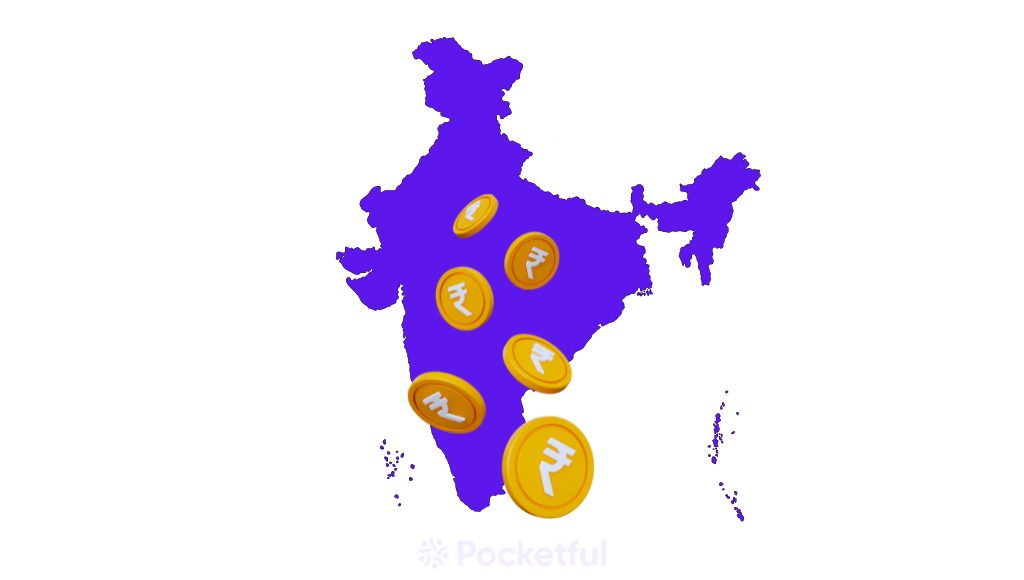| Type | Description | Contributor | Date |
|---|---|---|---|
| Post created | Pocketful Team | Jul-15-24 | |
| Add new links | Nisha | Mar-01-25 |

- Blog
- mutual funds
- history of mutual funds
History of Mutual Funds in India

The Mutual Fund industry has been growing rapidly for the last 5 years. According to the Association of Mutual Funds in India (AMFI), the assets under management (AUM) have increased by 35% from 39.42 lakh crore in 2023 to 53.4 lakh crore in 2024. This trend can be attributed to the younger generation of India, which wishes to achieve its financial goals through investments in mutual funds.
But the popularity mutual funds enjoy today wasn’t the case a few decades back. Therefore, in today’s blog, we will discuss the history of mutual funds in India, the future prospects of the mutual fund industry, and their advantages and disadvantages.
What are Mutual Funds in India?
Mutual funds are pooled investments of many investors that are professionally managed. A professional fund manager uses his/ her expertise to invest those funds in a particular proportion into different asset classes such as equity, debt, commodities, etc. The investment strategy must be consistent with the strategy mentioned in the prospectus.
Mutual funds are best for those investors who lack the knowledge and time to analyze market trends. However, a particular fee is charged to manage these funds, known as the expense ratio.
History of Mutual Fund

The first mutual fund in India was introduced in 1963, with the formation of the Unit Trust of India due to the combined efforts of the Government of India and the Reserve Bank of India. The primary objective of introducing mutual funds in India was to encourage savings and investing habits in the general public to improve economic growth and increase the participation of investors in the economy. UTI is the oldest mutual fund in India and was the only mutual fund until 1993.
This history of mutual funds could be broadly classified into five major phases:
First Phase (1964-1987)
Unit Trust of India was the first mutual fund of India incorporated by an Act of Parliament in 1963 and was under the control of the Reserve Bank of India. UTI launched the first mutual fund scheme called “Unit Scheme 1964” in 1964. In 1978, the Industrial Development Bank of India (IDBI) took over the responsibility of regulating the UTI. Near the end of the first phase, UTI had Rs. 6,700 crores of assets under management (AUM).
Second phase (1987-1993)
In this phase, the Government of India permitted the public sector banks, Life Insurance Corporation of India (LIC), and General Insurance Corporation of India (GIC) to launch mutual fund schemes. Some of the prominent mutual funds established in this phase were:
- SBI Mutual Fund
- Canbank Mutual Fund
- Punjab National Bank Mutual Fund
LIC and GIC established their first mutual funds in June 1989 and December 1990, respectively. Assets under management for the mutual fund industry were Rs. 47,004 crores near the end of this phase.
Third phase (1993-2003)
Before 1993, all the mutual fund corporations were introduced by public sector entities. The scenario changed in 1992 when SEBI was incorporated. After its incorporation, SEBI introduced the first set of SEBI Mutual Fund Regulations that were applicable to all mutual funds except UTI. Kothari Pioneer was the first private-sector mutual fund scheme and was registered in July 1993. Initial regulations were revised and replaced with a more comprehensive set of regulations known as SEBI (Mutual Fund) Regulation in 1996, which is currently applicable. Till 2003, there were 33 MFs with around 1,22,000 crores of assets under management.
Fourth Phase (February 2003 – April 2014)
In February 2003, UTI was split into two parts:
- Specified Undertaking of the UTI Trust of India (SUUTI)
- UTI Mutual Fund
This phase witnessed consolidation in the mutual fund history and numerous mergers among different private-sector funds. After the financial crisis in 2009, investors lost confidence in the mutual fund industry as most of them entered the markets at their peak. The abolition of the entry load by SEBI and the effects of the global financial crisis resulted in a period of slow growth in the AUM of the mutual fund industry in this phase.
Fifth Phase (Since May 2014)
In September 2012, SEBI introduced several measures to boost the penetration of mutual funds (MFs) in India, particularly in tier II and III cities, and align the interests of various stakeholders. These measures helped reverse the negative trends from the global financial crisis. The industry saw significant improvements post-2014, with steady inflows, a rise in assets under management (AUM), and investor folios.
The AUM crossed ₹10 trillion in May 2014, doubled to ₹20 trillion by August 2017, and reached ₹30 trillion in November 2020. By June 30, 2024, the AUM grew to ₹61.16 trillion. The impressive growth can be attributed to two factors:
- Progressive measures implemented by the SEBI
- Support from mutual fund distributors
Read Also: Who Regulates Mutual Funds in India?
Future Prospects of Mutual Funds

The future of mutual funds in India looks promising due to continued regulatory support and increasing retail participation, especially in smaller cities. The number of investor folios is expected to rise, achieving financial inclusion and investment awareness across the country.
Let’s also look at some pros and cons of investing in Mutual Funds.
Advantages of Investing in Mutual Fund
Various advantages of investing in mutual funds are:
- Mutual funds offer diversification benefits as they invest in multiple securities.
- The dividend earned from investing in mutual funds can be used for reinvesting.
- Mutual funds offer a lump sum and SIP option.
- Mutual funds are managed by professional fund managers whose expertise helps the investors to earn substantial returns.
Disadvantages of Investing in Mutual Fund
The disadvantages of investing in mutual funds are:
- Many mutual funds have a high expense ratio, which reduces returns.
- Mutual fund returns are not guaranteed.
- Mutual funds may also impose a lock-in period, which reduces liquidity.
- There is no connection between past performance and future performance of mutual fund schemes.
Read Also: A Comprehensive Guide on Mutual Fund Analysis: Quantitative and Qualitative Factors Explained
Conclusion
Mutual funds have proved to be a good investment opportunity for investors. They have consistently contributed to the nation’s growth and have also increased the number of participants in the financial markets. Mutual funds have made professional expertise accessible to the general public.
Affordability is one of the major criteria behind the success of mutual funds as SIP provides investors with advantages such as Rupee cost averaging, power of compounding, flexibility, etc. However, it is always advised to consult a financial advisor before investing.
| S.NO. | Check Out These Interesting Posts You Might Enjoy! |
|---|---|
| 1 | Types of Mutual Funds in India |
| 2 | Mutual Fund Factsheet: Definition And Importance |
| 3 | Equity Mutual Funds: Meaning, Types & Features |
| 4 | What Is An IPO Mutual Fund? Should You Invest? |
| 5 | Mutual Fund Fees & Charges in India 2024 |
Frequently Asked Questions
When did private-sector mutual funds begin operations in India?
Private sector mutual funds began operations in India in 1993.
How did the introduction of Systematic Investment Plans (SIPs) influence the mutual fund industry in India?
The introduction of Systematic Investment Plans (SIPs) made it easier for individuals to invest small amounts regularly. It increases retail participation and promotes disciplined investing.
What role did technological advancements play in the growth of mutual funds in India?
Technological advancements, such as online trading platforms and mobile apps, have made it more convenient for investors to access and manage their mutual fund investments, contributing to the industry’s growth.
When did foreign mutual fund companies enter the Indian market?
Foreign mutual fund companies started entering the Indian market in 1993, following economic reforms and liberalization policies.
Why are index funds popular in India?
Index funds are popular in India as they offer investors a low-cost option to earn returns comparable to the returns of a market index.
Disclaimer
The securities, funds, and strategies discussed in this blog are provided for informational purposes only. They do not represent endorsements or recommendations. Investors should conduct their own research and seek professional advice before making any investment decisions.